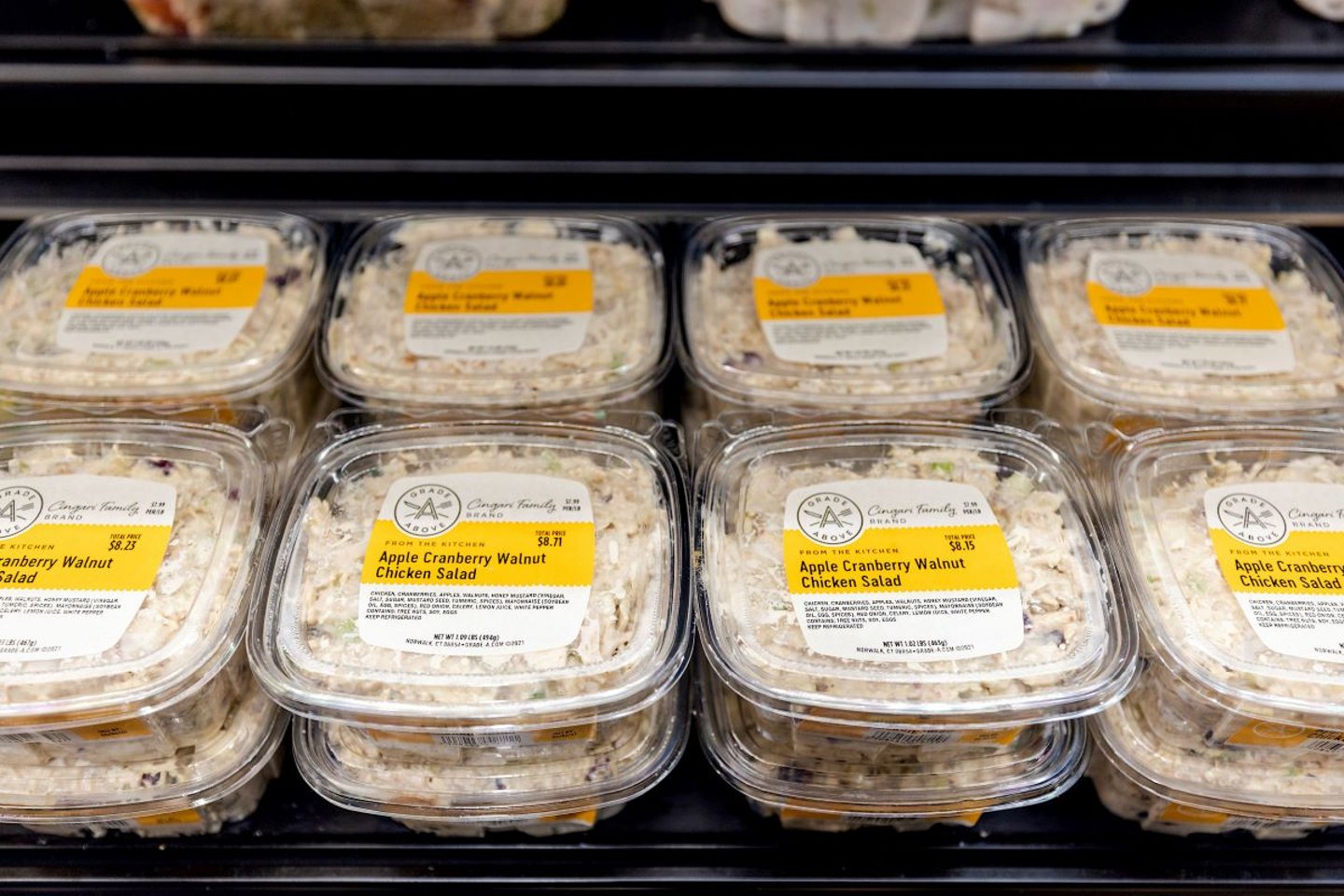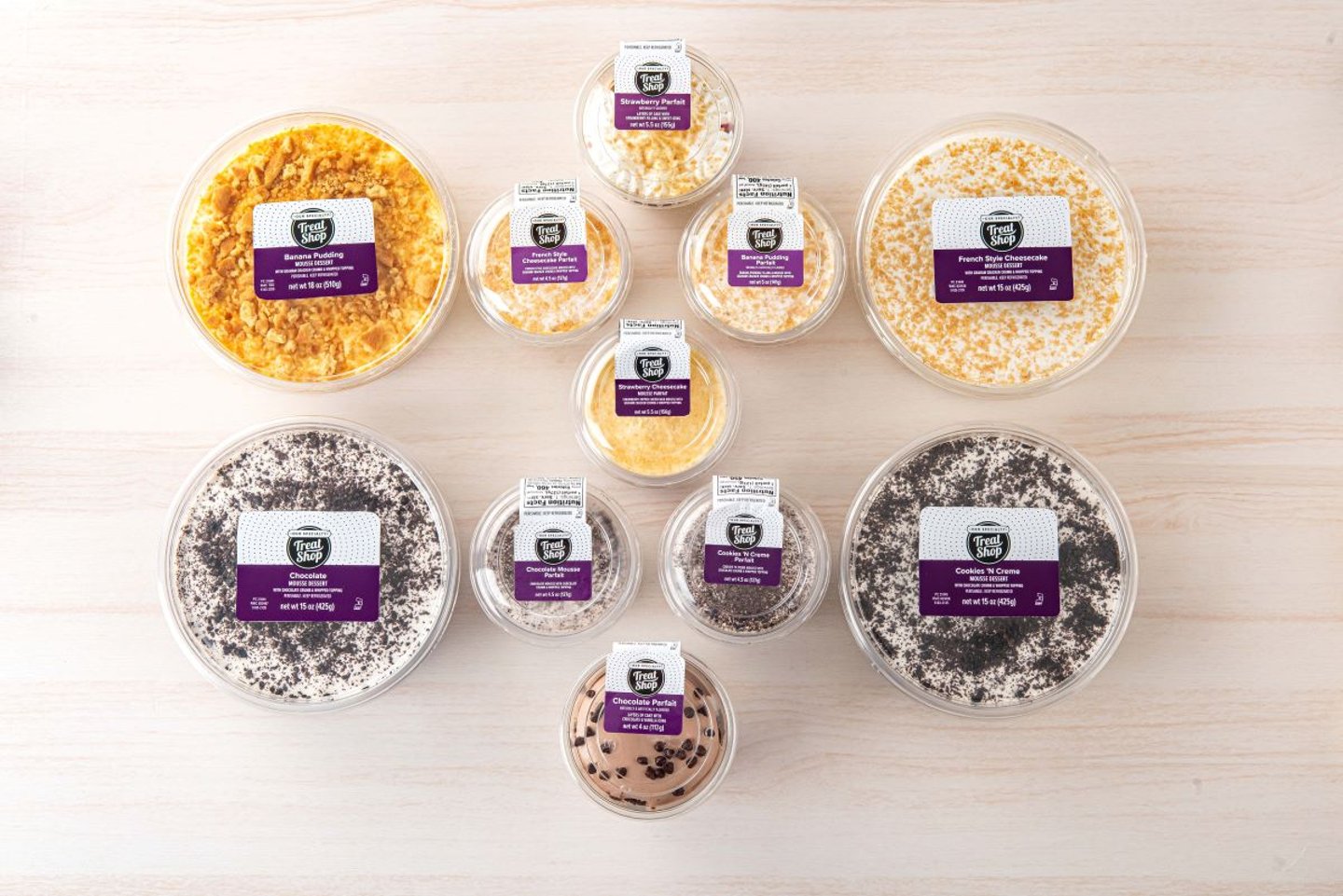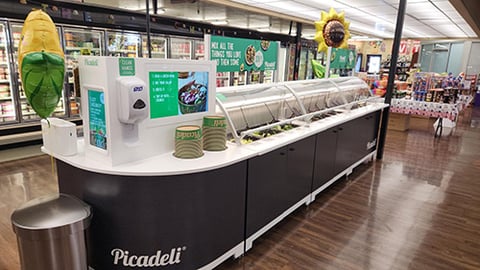Grab-and-Go Foods Enter New Phase
People still like freshly made ham-and-cheese sandwiches and blueberry muffins packed in clamshells for convenient eating, but grocery grab-and-go operations have become a lot more sophisticated.
Among the grocers that are helping lead the way, Cingari Family Markets, based in Norwalk, Conn., has developed a grab-and-go program that supplements what’s available to shoppers in the bakery and deli and includes meals, entrées and side dishes that the company makes to suit the customers of the dozen ShopRite supermarkets it operates in Connecticut. Executive Chef David Cingari, the program’s supervisor, trained at the Culinary Institute of America and had a long career as a chef in New York before founding a restaurant and catering business in Stamford, Conn.
[RELATED: It's Time to Reinvent Bakery and Deli Departments]
Cingari’s own grab-and-good food prep is accomplished in a central commissary, with continual distribution to Cingari ShopRite stores. At the commissary, product development is a careful and deliberate process of creating dishes on par with restaurants, and then scaling prep to suit the volumes needed. The development process has to be deliberate, according to Cingari, because the hallmark of grab-and-go food programs has to be consistency.
“We talk about it every day in the kitchen,” says Cingari. “If customers like it, it had better be the same the next time. Then freshness is critical, and it’s got to be restaurant quality.”
In response, as part of their grab-and-go sandwich lineup that complements the deli, Cingari ShopRite stores have added upscale variations using, for example, prosciutto instead of typical baked ham.
Is Everybody Happy?
Today, in addition to quality, consumers want a restaurant experience in terms of variety and novelty, which means it’s important to follow food trends to turn out items that incorporate these attributes, such as a chipotle quesadilla.
A trend that has emerged and become more pronounced since the COVID-19 pandemic, notes Cingari, is multiple purchasing. During the pandemic, people stuck at home had time to accommodate the various food preferences expressed by family members. Now, with more people shifting their professional activities from home back to the workplace and losing the cooking time they had, this phenomenon is taking hold in stores, he observes.
“We’re finding that people are grabbing multiple items for multiple people in the family,” affirms Cingari.
As such, the shopper can satisfy different needs at dinner, or store multiple items that satisfy the preferences of various family members throughout the week.
This tendency is becoming even more pronounced because more people are following specific diets. Restaurateurs today are updating menus to accommodate vegan, gluten-free and high-protein diets, among others, so everyone in a party can find something suitable on the menu. According to Cingari, grab-and-go food is best served by following this trend.
“You have to have every category and be able to cover vegan, vegetarian, gluten-free, and then spicy, not spicy, onions, no onions,” he says. “Everyone seems to have a sensitivity these days.”
Make It Snappy
The pandemic was critical in changing consumer behaviors in regard to grab-and-go food in a very literal sense, notes Richard Saker, president and CEO of Holmdel, N.J.-based Saker ShopRites. Many consumers in the New York metro area are fussy about their cold cuts and often place orders at the service deli counter, During the pandemic, however a lot of consumers just weren’t going to hang around the deli counter and risk another shopper passing on the COVID-19 virus.
“They wanted to spend less time in the store,” recounts Saker. “They wanted to take that trip that might be an hour and cut it down to 15 minutes.”
As a result, the pre-cut sliced cold-cut case that supermarkets would mount near the service counter suddenly became acceptable as consumers tried to limit their time in stores.
It’s not that more elaborate presentations of grab-and-go food didn’t exist before COVID, observes Saker, but the pandemic started a shift in consumer thinking. Then, as stay-at-home guidelines dragged on and consumers learned to prepare meals on a par with what they ate or ordered from restaurants, the mindset shifted further. As the COVID crisis eased, consumers repopulated restaurants, but inflation took off and remains high in service industries. The relative price of restaurant meals increased significantly at the same time that consumers were returning to workplaces and found themselves too time crunched to make the meals they once prepared at home. Through all this, the attraction of grab-and-go food increased.
[RELATED: Why Consumers Are Opting for Foodservice at Retail Over Restaurant Meals]
According to Saker, one broad consequence of all of these developments has been an evolution in how consumers think about meals. He maintains that there’s no dominant eating pattern; rather, consumers shop in a way that balances dollar and time savings. Of course, most do a basic core food shopping trip regularly, but a great majority purchase food more than once a week. In all of those occasions, grab-and-go food is attractive as a time saver, especially when consumers would rather take it easy at home than make a big meal.
Saker points out that his stores can save consumers time and money. Take his clamshell-packaged eggplant parmesan entrées, which combine convenience, freshness and flavor.
“People used to make this at home, but it’s very difficult,” he explains. “You’ll see these throughout our stores. These are all made in our commissaries. … I put very short shelf life on it, but this is microwavable. This is what the people want today. And for $11.99, you could feed three people with this.”
Throw in a salad, he suggests, and you’ve got a healthy, satisfying family meal.
Saker ShopRite runs four commissaries. From experience, Saker advises that, as grab- and-go food programs expand, it’s critical to involve people with culinary and commissary backgrounds who understand food preparation and how to conduct it successfully. Quality assurance professionals may be needed as an operation scales up. Saker even welcomes inspectors because, he emphasizes, to do otherwise would be to deal with some unpleasant consequences.
Flex Time
Flexibility should be part and parcel of a grab-and-go program, too, recommends Dan Wodzenski, head of operations and merchandising at Brooklyn Harvest Market.
The Brooklyn, N.Y.-based operation, with three stores in its home borough and one in neighboring Queens, has found that the pandemic-inspired willingness to pick up fresh sliced and store-packaged cold cuts has become so pronounced that the stores have been shutting down service deli counters and replacing them with grab-and-go sections.
Wodzenski adds that it’s important for a store to align with the priorities of the shopper. When young professionals began to become more prominent in the community some years ago, with many vegetarians and vegans among them, Brooklyn Harvest sought to address their preferences.
“Vegan is still a growing trend, so you definitely have to look for more vegan options and call attention to that with signage,” he says. “Once, you didn’t always have items that could satisfy a health-conscious lifestyle, especially with baked goods, but now you have gluten-free, and it’s gotten better. So now gluten-free is done well in pastries, cookies and muffins.”
However, the ever-changing Brooklyn population has shifted again: Now his stores are seeing fewer young professionals and more Latin consumers. In response, Brooklyn Harvest is adding specialties for that customer base.
[RELATED: How Grocers Can Embrace Latino Cultural Influence]
“We’re doing more Hispanic pastries, baked goods, breads, anything along those lines for grab and go, things [that] attune with Hispanic cuisines, from Spanish rice to enchiladas,” notes Wodzenski.
Given that many consumers are looking across departments to put together meals, cross-merchandising is an important grab-and-go opportunity. For example, consumers can fill out grab-and-go meals with bagged salads or fresh-cut fruit. Some vendors are making cross-department connections and providing the means to boost sales by offering products that enhance grab-and-go selections.
One such vendor is San Francisco-based True Story Foods, which offers Protein Toppers, all-natural diced chicken in three flavors — Oven Roasted, Roasted Garlic and Teriyaki Sesame — that can be placed in the produce or deli section for people who want to add meat to their salads. At a $6.99-7.99 price point per 6-ounce package, Protein Toppers provide the added nutrition, not to mention convenience, that many consumers want today.
Seize the Opportunity
Bill Heiler, senior manager, customer marketing at Buffalo, N.Y.-based Rich Products, also affirms that grab and go has taken greater hold among consumers.
“Shopper demand for innovative grab-and-go items has grown significantly over the past few years,” says Heiler. “Convenience, portion size and flavor exploration have been a huge opportunity area for retailers and suppliers looking to increase purchase frequency. In the past five years, sales of convenient grab-and-go bakery products like parfait cups and cake slices have grown 50%, according to NielsenIQ retail scan data. That’s why, at Rich’s, we’re thinking from the shopper’s perspective, delivering flavors and convenience that inspire trial.”
Many retailers recognize the opportunity that grab and go offers and are becoming more enterprising as they capitalize on it, he adds.
“We’re seeing retailers become more creative with merchandising, making convenient, craveable single-serve items available in more areas of the store to expand purchase occasions,” observes Heiler. “We’re merchandising Rich’s Our Specialty portion desserts in areas of the store where consumers are shopping for meal solutions, and we’re suggesting a portion dessert as an add-on to a prepared sandwich or salad that consumers are purchasing online.”
To link deli, bakery and dairy in grab-and-go food, Rich’s is currently in a store test with Rochester, N.Y.-based Wegmans Food Markets, which is featuring Rich’s Our Specialty Parfait Cups in the refrigerated dessert category.









